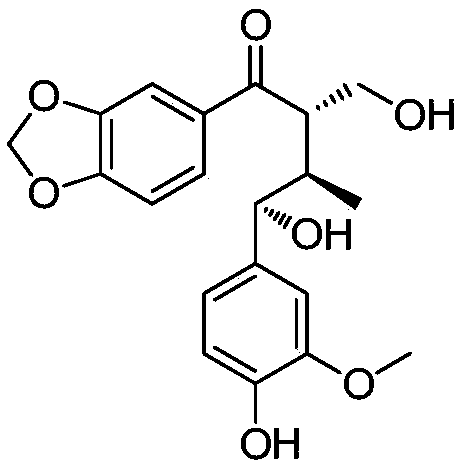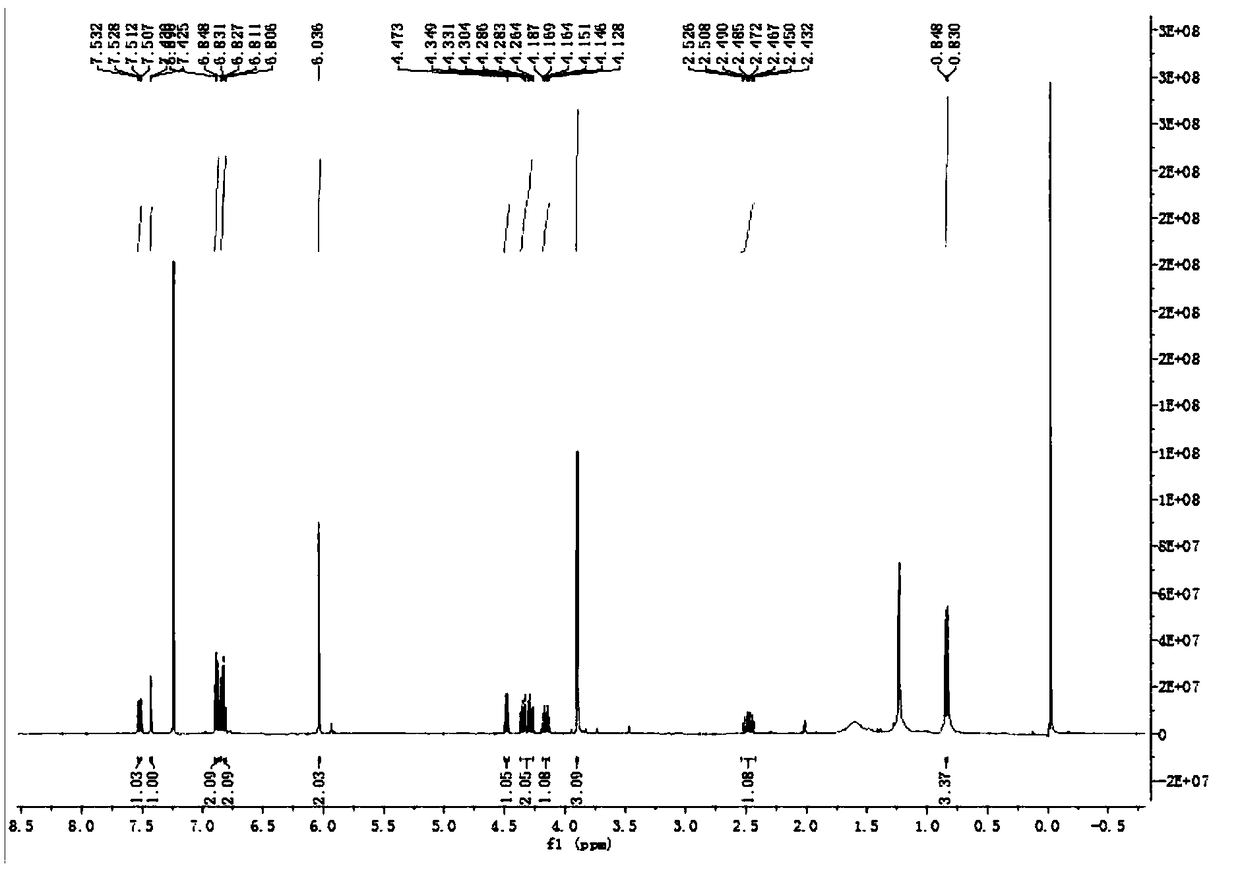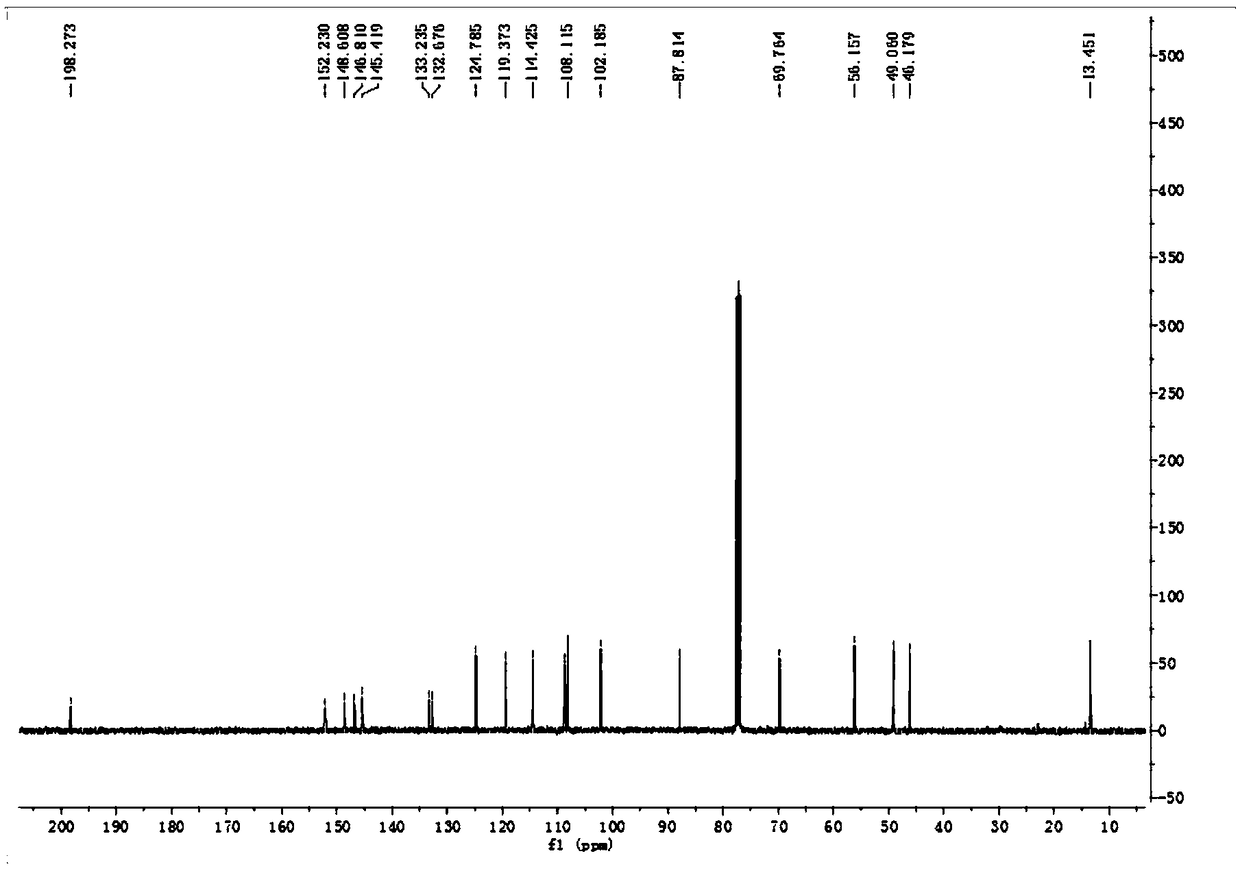Lignan compound as well as method for extracting and separating lignan compound from litsea coreana and application
A technology of lignans and separation method, applied in the field of lignans and their extraction and separation from eagle tea, to achieve the effects of good controllability and reproducibility, reduced sample loss and simple operation
- Summary
- Abstract
- Description
- Claims
- Application Information
AI Technical Summary
Problems solved by technology
Method used
Image
Examples
Embodiment 1
[0027] The method for extracting and separating the above-mentioned lignans from eagle tea comprises the following:
[0028] 1) Take 15kg of the leaves of the eagle tea tree that Leopard skin camphora is derived from, after drying and crushing, extract 3 times with methanol at a concentration of 90% under reflux, each extraction for 2-5 hours, remove the chlorophyll by MCI column chromatography after the extracts are combined, and then Removed the extract of chlorophyll and concentrated under reduced pressure to obtain 843g of methanol extract;
[0029] 2) After the methanol extract in 1) is dispersed in water, it is sequentially extracted three times with petroleum ether, ethyl acetate and n-butanol, and each extracted part is concentrated under reduced pressure to obtain extracts of various parts;
[0030] 3) Separate the extract from the ethyl acetate part in 2) by silica gel column chromatography, and use petroleum ether-ethyl acetate at a volume ratio of 10:1, 10:1, 5:1, ...
Embodiment 2
[0034] Above-mentioned 1) the aqueous methanol concentration 95% that reflux extraction is used, reflux extraction 3 times; Beneficial effects described in the present invention.
[0035] The present invention carries out the condition of TLC identification: developer is sherwood oil-ethyl acetate system and dichloromethane-methanol system, chromogenic agent a: observe fluorescence under ultraviolet lamp (254nm); chromogenic agent b: 5% ethanol sulfate Spray, bake at 105°C until color develops; color developer c: iodine jar for color development.
[0036] Structural identification: The spectroscopic techniques used mainly include nuclear magnetic resonance spectroscopy ( 1 H-NMR, 13 C-NMR, NOESY, HSQC, HMBC) and mass spectrometry (HR-ESI-MS) identified the structures of the compounds.
[0037] The compound is a yellow oil, HR-ESI-MS [M–H]–m / z 373.1287 (calculated value 373.1293), combined with NMR spectrum to determine the molecular formula of the compound is C 20 h 22 o ...
Embodiment 3
[0042] The inhibitory effect of the lignan component on human liver cancer cells HepG2 was determined.
[0043] Using the conventional MTT method, select the above-mentioned cells in the logarithmic growth phase, adjust the cell concentration to 10×105 cells / mL with culture medium containing 10% fetal bovine serum, inoculate 100 μL per well into a 96-well flat-bottomed cell culture plate, place in After culturing in a 37° C., 5% CO2 incubator for 24 hours, the samples were added at concentrations of 0, 10, 20, 40, 80, and 160 μg / mL, and three replicate wells were set up. Continue culturing in a 37° C., 5% CO2 incubator for 48 hours, then discard the culture solution with the sample, and add 100 μL of culture solution. Then add 20 μL of MTT solution (5 mg / mL) to each well to continue culturing for 4 hours, discard the supernatant after centrifugation, wash with PBS for 2 to 3 times, and then add MTT-containing culture solution. The culture was terminated, and the culture mediu...
PUM
 Login to View More
Login to View More Abstract
Description
Claims
Application Information
 Login to View More
Login to View More - R&D
- Intellectual Property
- Life Sciences
- Materials
- Tech Scout
- Unparalleled Data Quality
- Higher Quality Content
- 60% Fewer Hallucinations
Browse by: Latest US Patents, China's latest patents, Technical Efficacy Thesaurus, Application Domain, Technology Topic, Popular Technical Reports.
© 2025 PatSnap. All rights reserved.Legal|Privacy policy|Modern Slavery Act Transparency Statement|Sitemap|About US| Contact US: help@patsnap.com



